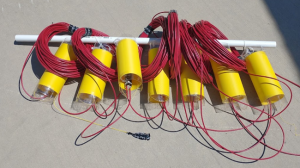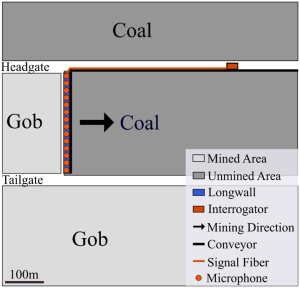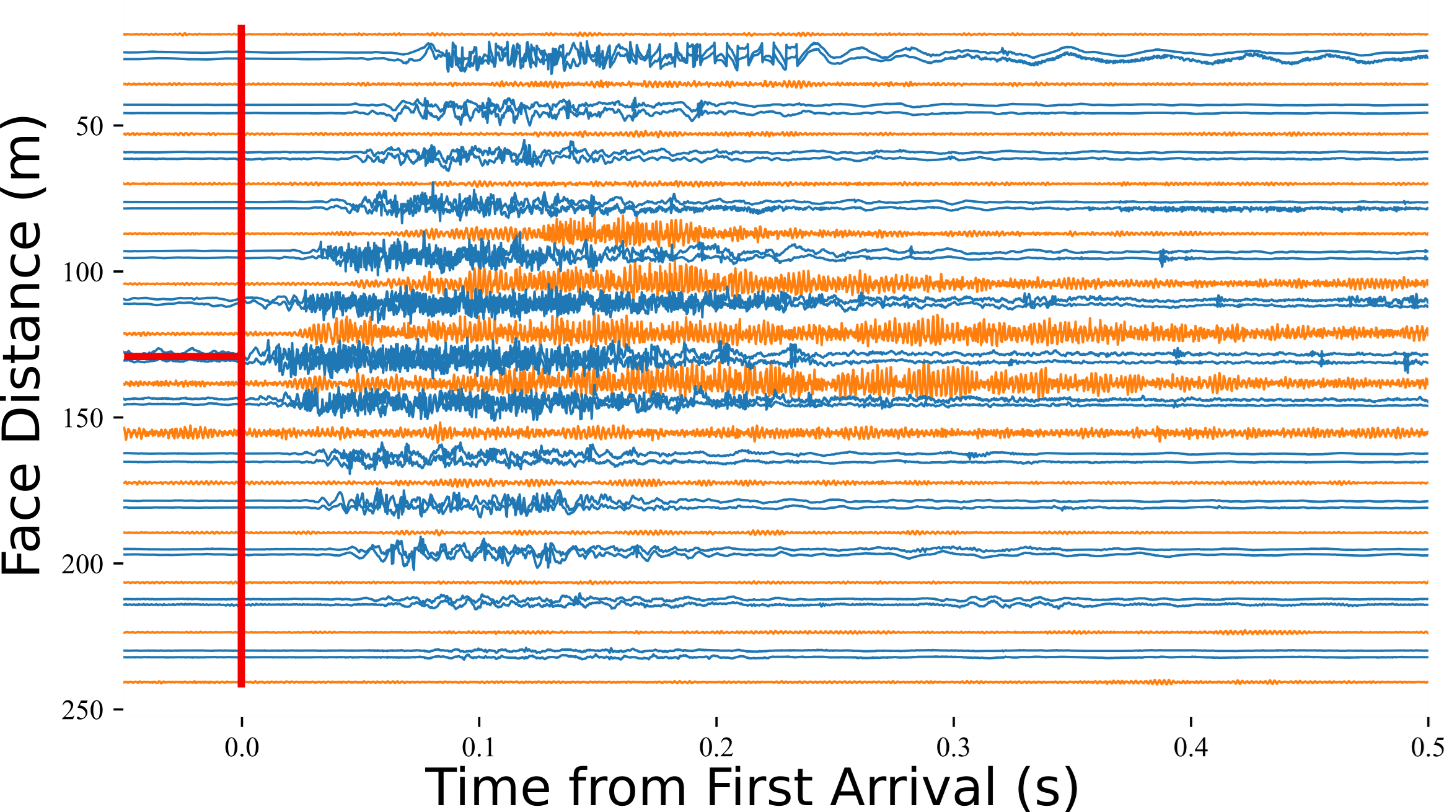A rockburst is simply a arena wherever stone aliases ember is violently ejected into excavation openings. Rockbursts tin merchandise important amounts of power and person nan imaginable to injure workers and disrupt operations. Despite decades of research, these events are notoriously difficult to predict, and attraction has turned to managing nan related risks.
In hardrock mines, seismic monitoring – nan aforesaid exertion utilized to show earthquakes, has proven invaluable for knowing and managing rockburst-related hazards. Most heavy hardrock mines person a seismic monitoring system. However, ember mines, specifically longwall mines, person struggled to use these aforesaid systems. There are respective reasons for this [Swanson et al. 2016], including:
- Coal mines run astatine overmuch larger scales and beforehand faster than astir hardrock mines;
- Use of electronics is heavy restricted owed to nan imaginable beingness of explosive gasses; and
-
 Figure 1. Longwall mining conception showing (A) an oblique position of nan longwall operating, (B) a adjacent up of nan shearer, and (C) a floor plan position of nan overburden. Image from NIOSH.
Figure 1. Longwall mining conception showing (A) an oblique position of nan longwall operating, (B) a adjacent up of nan shearer, and (C) a floor plan position of nan overburden. Image from NIOSH.Coal mines thin to nutrient galore much seismic events than hardrock mines, which makes it difficult to process nan information quickly capable to beryllium meaningful.
To thief flooded these challenges, researchers successful NIOSH’s mining programme person developed a caller attack to show rockbursts occurring adjacent nan longwall look utilizing fibre optic cable.
Longwall mining is nan astir productive shape of underground ember mining. It is besides employed for mining soft minerals for illustration soda ash (e.g., successful nan shape of trona) and cookware ash. In this mining method, ample panels of worldly (up to 0.25 miles wide by 2-5 miles long) are extracted utilizing a cutting instrumentality that moves up and down nan mining face. A agelong statement of hydraulic shields holds up nan contiguous roof, and a conveyor strategy hauls nan assets retired of nan mine. As worldly is extracted, nan antecedently mined area is simply allowed to cave and capable nan void created by mining. This manufacture video by F.T.I Pty Ltd* provides a ocular preamble to nan longwall mining method.
 Figure 2. DAS seismoacoustic array. The array consists of lead cables (red) and microphones (yellow). Photo from NIOSH.
Figure 2. DAS seismoacoustic array. The array consists of lead cables (red) and microphones (yellow). Photo from NIOSH.Distributed fibre optic sensing (DFOS) is simply a family of comparatively caller monitoring technologies that usage laser pulses successful a fibre optic cablegram to measurement different quantities, specified arsenic strain aliases somesthesia on nan fiber. A subset of DFOS is distributed acoustic sensing (DAS), which measures vibrations successful nan fibre optic cablegram and is tin of signaling rockbursts and different mining-induced seismic events, meaning that it could beryllium utilized successful spot of accepted seismic monitoring systems. One advantage of DAS, and DFOS successful general, is that nan fibre optic cablegram itself is utilized to dress up a drawstring of sensors that tin beryllium respective miles long. This enables monitoring astatine scales that were antecedently impractical. Additionally, nan electronics tin beryllium deployed miles distant successful caller aerial while nan cablegram itself tin beryllium installed anywhere, allowing for monitoring of areas antecedently off-limits owed to concerns astir explosions.
In bid to accommodate DAS for monitoring seismicity astatine a longwall face, NIOSH researchers created an array of fibre optic “microphones” that are conscionable fibre optic cablegram wrapped astir hollow integrative cylinders (see fig 2). The microphones are attached to nan longwall shields by lead cables, which are loose segments of fibre optic cable. Both microphones and lead cables tin beryllium utilized arsenic sensors. Because nan monitoring array is physically attached to nan mining equipment, it advances pinch nan longwall face.
 Figure 3. Layout of DAS deployment. Image from NIOSH.
Figure 3. Layout of DAS deployment. Image from NIOSH.A trial deployment was conducted astatine a longwall ember excavation successful nan United States. The lead cables (red) were zip-tied to nan shields and 14 microphones were deployed crossed nan look (see fig 2).
During nan deployment, respective seismic events were detected by a aboveground seismic network. Examples of nan audio recorded by nan DAS microphones during these events are included below. In these recordings you tin perceive nan hum of nan longwall machinery followed by a crashing sound arsenic worldly is ejected onto nan face. While these events weren’t peculiarly hazardous, they do correspond a smaller type of a rockburst. Because of nan dense array (sensors each fewer feet), it is imaginable to estimate wherever nan arena occurs on nan longwall look by identifying nan sensor that detects nan arena first (red lines successful Figure 4).
https://blogs.cdc.gov/niosh-science-blog/wp-content/uploads/sites/22/2023/04/E32_mic_07.mp3 https://blogs.cdc.gov/niosh-science-blog/wp-content/uploads/sites/22/2023/04/E09_mic_13.mp3
 Figure 4. Data recorded by nan seismoacoustic array. The bluish channels were recorded by lead cables and nan orangish channels were recorded by nan microphones. The reddish lines bespeak nan first presence and corresponding position connected nan longwall face.
Figure 4. Data recorded by nan seismoacoustic array. The bluish channels were recorded by lead cables and nan orangish channels were recorded by nan microphones. The reddish lines bespeak nan first presence and corresponding position connected nan longwall face.The lead cables (blue) thin to grounds shorter signals that are apt much typical of nan released seismic power while nan microphones (orange) grounds longer signals connected a fewer channels closest to nan events, picking up nan sounds of nan worldly being ejected and settling.
The DAS array overcomes galore of nan shortcomings of accepted in-mine seismic monitoring for ember mines:
- Sensors move pinch nan mining front, eliminating request for predominant reconfigurations, and
- Since nan sensing constituent is an intrinsically safe fibre optic cable, location are nary restrictions connected its placement.
Additionally, nan array records near-field information (sounds and vibrations) that whitethorn supply amended accusation astir nan grade and mechanisms of nan harm caused by rockbursts than accepted seismic systems.
Although improvements are needed earlier DAS-based arrays tin beryllium routinely utilized for seismic monitoring, they supply a caller benignant of information that whitethorn thief engineers amended understand and negociate rockburst risks successful longwall mines. Other types of mines whitethorn besides use from DAS and seismoacoustic monitoring. Please scope retired to nan NIOSH mining programme ([email protected]) if you would for illustration to further talk fibre optic sensing investigation successful underground mines.
Derrick Chambers, M.S., is simply a mining technologist successful nan NIOSH Spokane Mining Research Division.
Shawn Boltz, M.S., is simply a mining technologist successful nan NIOSH Spokane Mining Research Division.
*References to companies, products aliases services do not represent an endorsement aliases favoritism by NIOSH, CDC, HHS, aliases nan U.S. government.”
Chambers D, Shragge J [2023]. Seismoacoustic Monitoring of a Longwall Face Using Distributed Acoustic Sensing. Bulletin of nan Seismological Society of America 2023 doi: https://doi.org/10.1785/0120220219
Karacan CÖ [2008]. Modeling and prediction of ventilation methane emissions of longwall mines utilizing supervised artificial neural networks. International Journal of Coal Geology 73(3-4):371-387, 10.1016/j.coal.2007.09.003.
Swanson P, Boltz MS, Chambers D [2016]. Seismic monitoring strategies for heavy longwall ember mines, ed. by NIOSH Spokane, WA: U.S. Department of Health and Human Services, Centers for Disease Control and Prevention, National Institute for Occupational Safety and Health, p. 100.
Posted connected July 7, 2023 by Derrick Chambers, M.S. and Shawn Boltz, M.S.

 10 months ago
10 months ago



/cdn.vox-cdn.com/uploads/chorus_asset/file/25261926/njtransit.jpg)
/cdn.vox-cdn.com/uploads/chorus_asset/file/19344713/microsoftteams.jpg)


 English (US) ·
English (US) ·  Indonesian (ID) ·
Indonesian (ID) ·